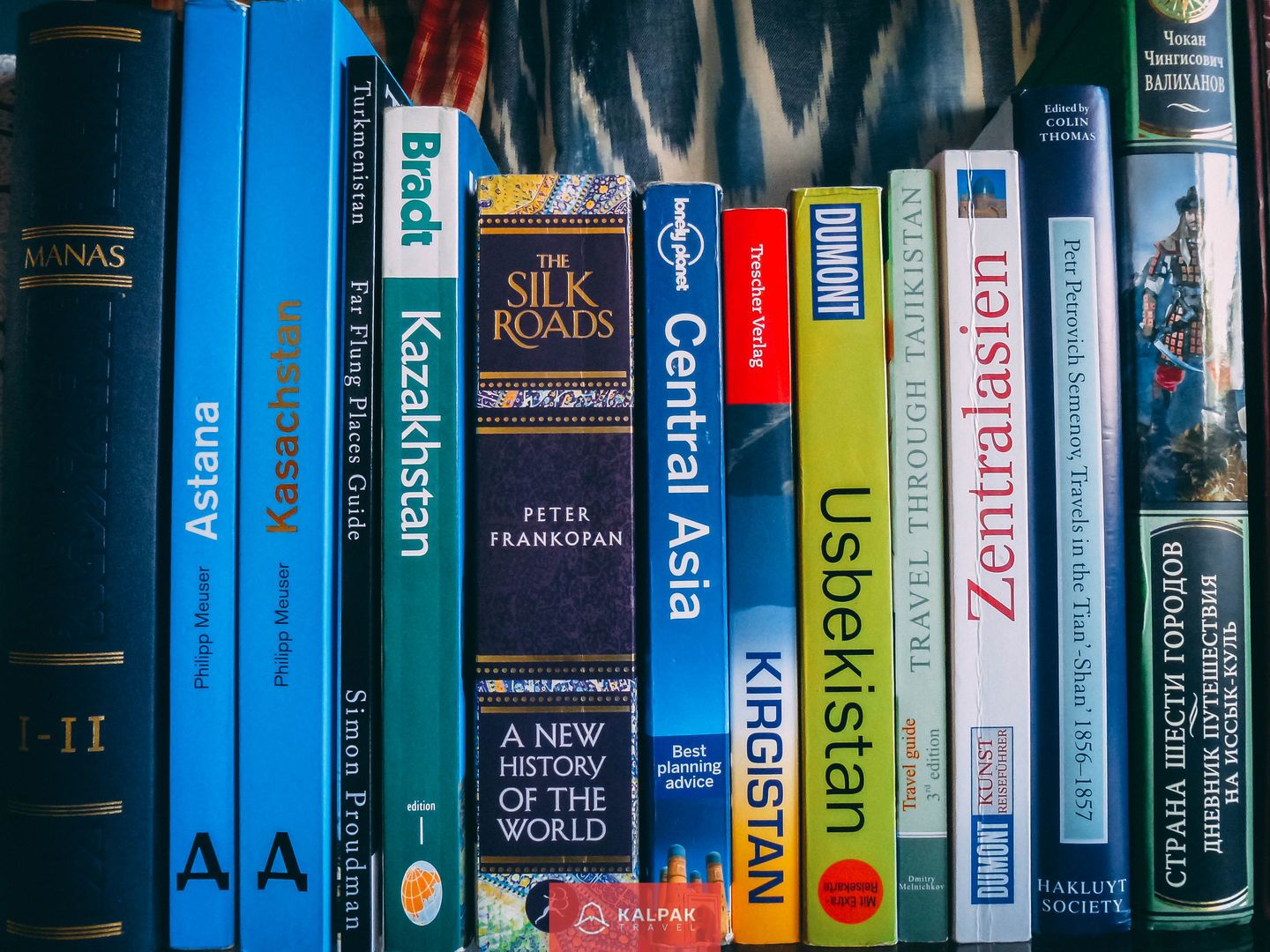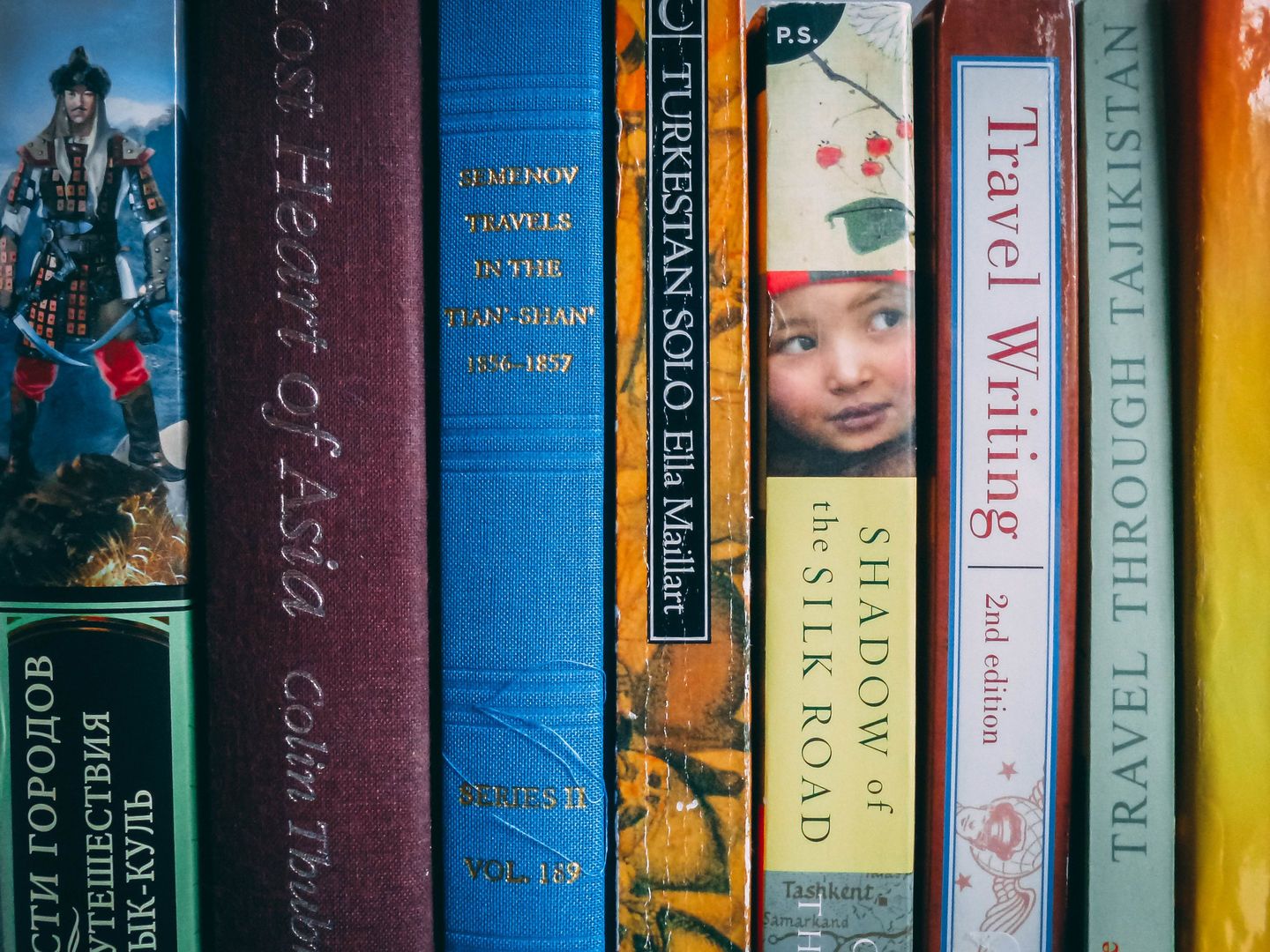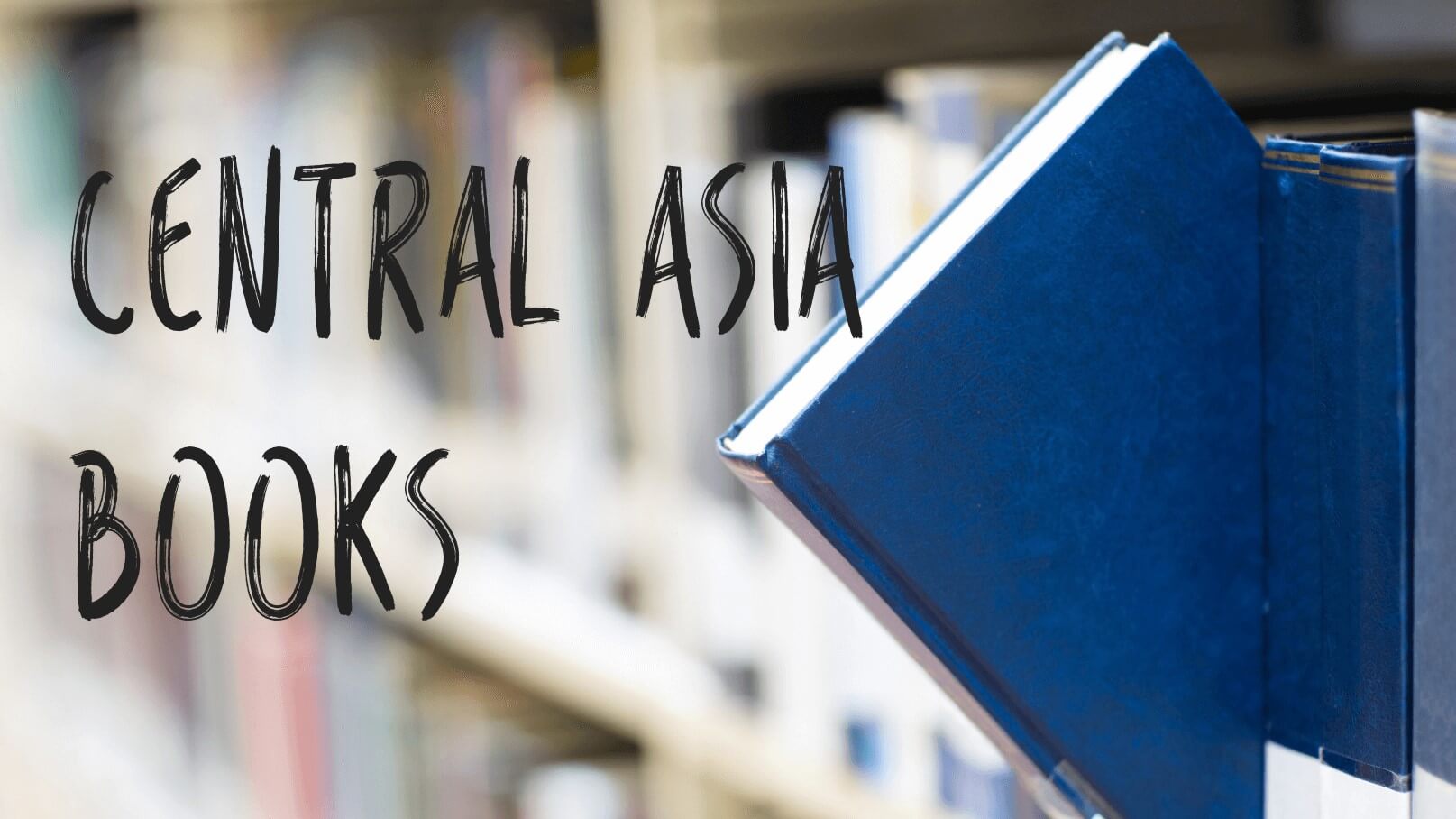Best Central Asia Books To Read
Our book recommendations on Central Asia are specifically curated for beginners who have little to no prior knowledge about this region, as well as for travelers who are planning to explore Central Asia. Additionally, this list is beneficial for those who have already embarked on a journey to this region and found themselves pleasantly surprised by the immense variety of cultures, traditions, and a complex history that may have been initially challenging to grasp.
Present-day Central Asia consists of five post-Soviet states: Kazakhstan, Kyrgyzstan, Tajikistan, Turkmenistan, and Uzbekistan. However, before the era of the Soviet Union, this vast region, stretching from Western China to the Caspian Sea, witnessed the rise and fall of numerous empires and kingdoms throughout centuries. Therefore, to truly comprehend the present state of Central Asia, it becomes crucial to familiarize oneself with its historical and cultural development—both during and after the decline of the Silk Road trade, as well as during and after the Soviet Union era.
In our book recommendations, we offer a diverse selection that encompasses the history of Central Asia and the Silk Road, political history, travel guides, travelogues, as well as books exploring the region’s cuisine, culture, music, and literature. These literary works will not only deepen your understanding of Central Asia but also enhance your overall exploration and appreciation of its vibrant tapestry.
Travel Guide Books on Central Asia
We recommend obtaining travel guides as they target independent travelers and include classic suggestions for hotels, places to eat, and things to do. Even if you travel on an organized small group or private tour with us, they provide general information on the places you will visit and offer a brief overview of Central Asian history.
Advantage of the Lonely Planet Central Asia (2018) is that it includes all five stans in one book and gives a very short historical introduction to the region and each country.
Bradt Guides has separate books about Uzbekistan (2020), Tajikistan (2020), Kyrgyzstan (2019), and Kazakhstan (2018). Turkmenistan was last updated in 2006, we recommend Turkmenistan from Far Flung Places Travel Guide (2018) instead.
Gizi Map Central Asia Geographical: Kazakhstan (South), Kyrgyzstan, Tajikistan, Turkmenistan (East), Uzbekistan, Gizella Bassa, (2016) – Map without Astana and northern Kazakhstan
Horizon Guides – Exploring The Silk Road: Highlights and key routes.
CENTRAL ASIA BOOKLIST
These books will equip you with a blend of practical information, historical context, cultural insights, and local perspectives, enhancing your understanding of Central Asia as you embark on your journey.
“Central Asia in World History” by Peter B. Golden (2011) : This book offers a concise overview of Central Asia’s history, covering various aspects such as the rise and fall of empires, cultural exchanges, and interactions with neighboring regions. The book aims to cover Central Asia’s rich historical tapestry, tracing the region’s pivotal role in the development of civilizations, cultural exchanges, and geopolitical dynamics.
“Sovietistan: Travels in Turkmenistan, Kazakhstan, Tajikistan, Kyrgyzstan, and Uzbekistan” by Erika Fatland (2019): This book provides an overview of Central Asian history, politics, and culture through the author’s firsthand encounters, anecdotes, and insights into the region’s contemporary realities. While it occasionally employs broad generalizations and stereotypical descriptions, it remains an entertaining and easy-to-read travelogue, one of the few written recently about Central Asia.
“The Silk Roads: A New History of the World” by Peter Frankopan (2016): This thought-provoking book is not solely devoted to Central Asia with the first part delving into the historical context of the Silk Roads. It explores the ancient trade routes connecting Asia and Europe, highlighting their economic, cultural, and political significance throughout history. Further Frankopan examines the enduring influence of the Silk Roads on contemporary history, revealing how these routes continue to shape global dynamics, trade relationships, and geopolitical considerations in the modern world. It offers insights into the interconnectedness of different regions and their influence on the development of civilizations.
“Lost Enlightenment: Central Asia’s Golden Age from the Arab Conquest to Tamerlane” by S. Frederick Starr (2013): This book delves into the intellectual and cultural achievements of Central Asia during its golden age, from the 8th to the 14th centuries. It explores the contributions of Central Asian thinkers, scientists, and artists and sheds light on the region’s rich cultural heritage. Sometimes during city tours, you may wonder why you have never heard of some scholars from Central Asia, who were indeed important and influential. The author of the book asked the same questions and conducted extensive research to explain that Central Asia had its own era of enlightenment, which gradually lost its importance over time.
A Carpet Ride to Khiva: Seven Years on the Silk Road, Christopher Aslan Alexander, (2010): This interesting travelogue allows you to explore the region through personal stories. The author recounts his life in Uzbekistan and how he established a carpet workshop in Khiva, reviving medieval carpet designs.
“The First Teacher” 1962 or “Jamilia” 1958 by Chingiz Aitmatov, an author from Kyrgyzstan:
“The First Teacher“: Regarded as a classic of Kyrgyz literature, this book offers readers a deeper understanding of the cultural nuances and societal changes in Central Asia during the Soviet era. It tells the story of a young teacher assigned to a remote Kyrgyz village after the establishment of the Soviet Union. It provides insights into the impact of the Soviet Union on traditional society in Kyrgyzstan, depicting the cultural struggles between tradition and progress through a simple story.
“Jamilia” is a captivating novel set in a rural Kyrgyz village during World War II, focusing on a love story. Named after the central character, Jamilia, the book provides readers with more than just a war narrative. It offers a profound glimpse into the local culture, highlighting the role of women and providing insights into everyday life in Central Asia during that tumultuous time.
Diverse Central Asia books
- Palgrave Concise Historical Atlas of Central Asia, R. Abazov, 2008: The book features historical maps along with one-page-long introductory explanations of the corresponding historical events.
- History of Civilizations of Central Asia; UNESCO edition – 6 volumes, These volumes are freely available to read online and provide a vast amount of information on the subject
- The Great Game: The Struggle for Empire in Central Asia – Peter Hopkirk, (1992) : is renowned for its depiction of the political struggle involving spies for influence in Central Asia. The book focuses on the rivalry between Russia and the United Kingdom at the end of the 19th century.
- Central Asia through writer’s eyes – Kathleen Hopkirk, (1993): is a compilation of extracts from historical writings by authors who extensively traveled the region, primarily during the 19th and 20th centuries. The book organizes these extracts into chapters about the historical places mentioned and provides explanations, offering readers a unique perspective on Central Asia’s history.
- The Silk Road in World History (New Oxford World History) – Xinru Liu, (2010): part of the New Oxford World History series, is a concise introductory book that provides a comprehensive overview of the Silk Road. This book offers readers a valuable understanding of the historical significance and impact of the Silk Road, making it an excellent resource for those seeking a broad perspective on this ancient trade route.
- The Turks in World History – Carter Vaughn Findley (2004): explores the evolution and transformation of the Turkic language family over time. The book draws a captivating metaphor of a bus journey, starting from Central Asia and traveling to Turkey. The book explains how the Turkic languages changed, adapted, and acquired new passengers, names, and nuances along the way. Given that four out of the five Central Asian countries speak Turkic languages, this book provides valuable insights into the linguistic and cultural history of the region.
- The New Central Asia: Geopolitics and the Birth of Nations, Olivier Roy, (2007): The book offers insightful analysis of the region’s political landscape, including the challenges of nation-building, the influence of external powers, and the complex interplay of ethnic and religious identities.
- The Birth of Tajikistan: National Identity and the Origins of the Republic, Paul Bergne, (2018)
- Religions of the Silk Road: Premodern Patterns of Globalization – R. Foltz, (2010),
- Central Asia – A New History from the Imperial Conquests to the Present, Adeeb Khalid (2021)
- Inside Central Asia: A Political and Cultural History of Uzbekistan, Turkmenistan, Kazakhstan, Kyrgyzstan, Tajikistan, Turkey, and Iran – Dilip Hiro, (2011)
- Dictators Without Borders: Power and Money in Central Asia, Alexander A. Cooley Ph.D, (2019).
- Central Asia Phrasebook & Dictionary Lonely Planet, Justin Jon Rudelson, (2019)
- Uzbekistan – Culture Smart!: The Essential Guide to Customs & Culture, Alex Ulko, Geoffrey Chesler, (2017)
- Kazakhstan – Culture Smart!: The Essential Guide to Customs & Culture, Dina Zhansagimova (2013)
- Turkestan Solo: A Journey Through Central Asia – Ella K. Maillart, (1930s)
- In Search of Kazakhstan: The Land That Disappeared, Christopher Robbins, (2008)
- Everyday Life in Central Asia: Past and Present – Jeff Sahadeo, Russell Zanca, (2007).
Cookbooks
- Samarkand: Recipes & Stories from Central Asia & The Caucasus- Caroline Eden, (2016)
- Red Sands: Reportage and Recipes Through Central Asia, from Hinterland to Heartland, (2020)
Let us know what is your favorite book on Central Asia and what would you add to this short list?
If you would like to experience Central Asia first hand check out our tours.
Disclaimer: For your convenience, we have provided links to the Amazon website for each book’s year of publication. Please note that these links are not affiliate links. We recommend checking these links, as most of the books are readily available in Kindle format rather than in printed copies. Enjoy your reading!






